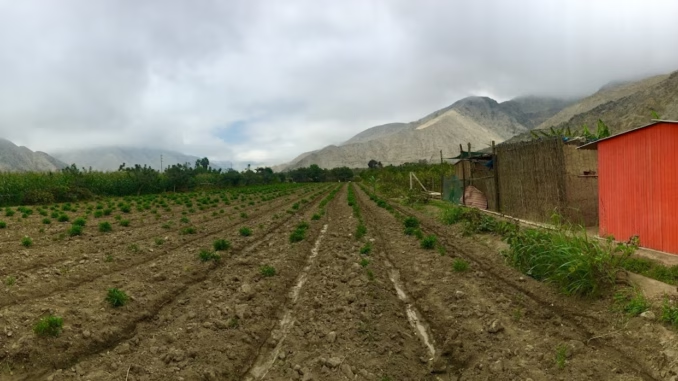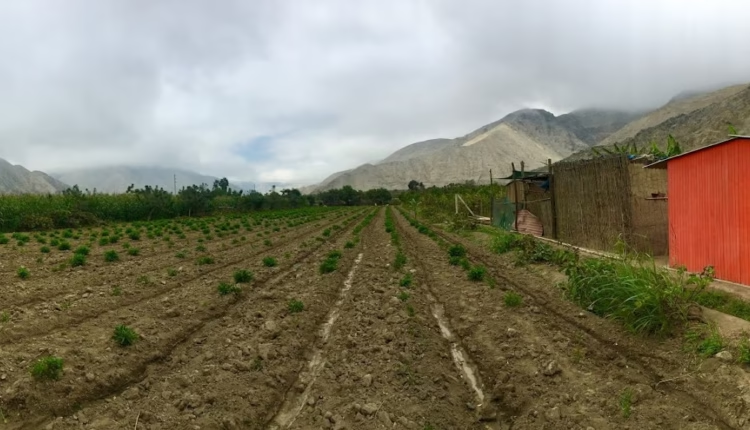Unpacking the Colonial History of Latin American Coffee Production

Today, Latin America produces roughly 60% of the world’s coffee—but the history of colonization still impacts modern-day coffee farmers.
BY ELLIE PEÑA
BARISTA MAGAZINE ONLINE
Featured photo by Ellie Peña
“The more a product is desired by the world market, the greater the misery it brings to the Latin American peoples whose sacrifice creates it.” -Eduardo Galeano, author of Open Veins of Latin America.
Eduardo Galeano said it best: In Latin America, profit rarely stays with the people who produce the world’s most coveted goods. Instead, the cost is paid in labor, land, and lives.
Coffee is no exception; the cultivation and trade of coffee has shaped Latin America’s trading networks, connections, investment, and international relations. Today, Latin America produces roughly 60% of the world’s coffee. Colombia’s reputation for quality is legendary, Brazil has been at the top of the charts since the 1700s, and, across the region, social structures and Latine culture has been built around cafecito. In Colombia, you might sip a tintico in the afternoon, or in Cuba, a cortadito with your friends—and in Peru, a small cup with dessert. These are the moments when we pause, connect, and, of course, argue who has the best coffee.
But like Eduardo Galeano warns, the story in our cups comes with a price. Coffee’s history in Latin America is steeped in exploitation and rooted in colonial systems designed to extract wealth for the Global North—all while leaving Indigenous peoples of coffee-producing countries impoverished. Even today, coffee is one of the most traded commodities in the world, and yet, the farmers who grow it rarely see profits enjoyed by the exporters, roasters, and retailers.


The Colonial Roots of Latin American Coffee Production
Though many of us sip on our daily coffee without thinking about how it got to us, coffee’s original arrival in Latin America is inseparable from the European colonization of the region. Violent seizures of land, forced enslavement, and diseases that decimated Indigenous populations made up this period of time.
The book Uncommon Grounds by Mark Pendergrast recounts how the Dutch gifted a coffee plant to the French government during the early 18th century. In 1720, coffee-loving French naval officer Gabriel Mathieu de Clieu would introduce coffee cultivation to a colony in Martinique. By the end of the 18th century, coffee would join sugarcane, tea, and cocoa as one of the most coveted colonial goods—grown in colonies to be sent to European markets for profit.
The coffee boom was further fueled by the transatlantic trade, with enslaved Africans forced to work coffee fields in brutal conditions. Uncommon Grounds shares that in Brazil, for example, the number of enslaved people jumped from 26,254 in 1825 to 43,555 in 1828, to meet production demands.
Haiti: The Original Coffee Powerhouse
In the 1700s, French-occupied Haiti supplied nearly half the world’s coffee—but profits stayed in the hands of the colonists. The Haitian Revolution, which took place between 1791 and 1804, would shatter these systems and deliver a massive shock to the global coffee market. Like Haiti, coffee was introduced to Puerto Rico, Cuba, and the Dominican Republic in the 1700s. Puerto Rico became pivotal in coffee production, but once the United States took Spain’s place in colonizing Puerto Rico, the U.S. began pivoting away from coffee production.
Coffee arrived in South America around the same time it did in the Caribbean. Brazil’s coffee empire began with a little scandal: In 1721, Sergeant Fransico de Mela Palheta traveled to French Guiana to resolve land disputes, but allegedly had the “hots” for the governor’s wife, who gifted him the coffee seeds that would become Brazil’s foundation of an economy still dominated by coffee today.
The first plantation was in Rio de Janeiro, and by the 1800s, production exploded. Plantations completely relied on enslaved African and Indigenous people and worked them to exhaustion in inhumane conditions. For the fazenda (farm) owners, coffee beans were sadly worth far more than the human lives that cultivated it.
Central America
In the book Coffee and Power: Revolution and the Rise of Democracy in Central America, Jeffery M. Paige shares that in Central America, coffee was a family fortune maker. In Costa Rica, descendants of Spanish colonial elites—the Montealegre Family—expanded coffee exports and consolidated political influence. Across Central America, Indigenous lands were confiscated and communities were forced into sharecropping or debt peonage.
By the late 1800s, German settlers in Guatemala controlled around 40% of coffee estates in Alta Verapaz. With capital and “modernization,” they brought inequality. Coffee wealth propped up authoritarian governments and deep racial and economic divides—a pattern repeated in Mexico, El Salvador, and Nicaragua.
Whether it was from Europe or the United States, greed and exploitation added to growing civil unrest all across Latin America. A Colombian coffee grower quoted in Uncommon Grounds said, “When we aren’t in a revolution, we are waiting for it.”



The Legacy in Today’s Cup
Unfortunately, the colonial blueprint of wealthy land owners at the top with exploited labor at the bottom hasn’t gone away. Coffee remains one of the world’s most consumed drinks, but the people who grow it still bear the brunt of an unequal system. The same forces that shaped coffee’s past—consumer demand, land inequality, and racialized labor exploitation—still exist.
Though coffee in Latin America is rooted in a dark history, it’s also a symbol of the power and resistance of Indigenous communities—a beacon of hope that Latin America’s coffee producers will be able to own the fruits of their labor, and build something more.
In the coming weeks, we’ll release a continuation of this article, where we’ll take a closer look at how the colonial history of Latin America coffee production is impacting producers today.
ABOUT THE AUTHOR
Ellie Peña (she/her) is a Peruvian-American coffee creative based in Queens, N.Y., and the founder of Pilas Café: a mobile project rooted in all things cafecito & ethical sourcing. When she’s not slinging espresso, she’s reading Latine fiction, practicing Muay Thai, or hosting cozy craft events.
Subscribe and More!
As always, you can read Barista Magazine in paper by subscribing or ordering an issue.
Read the August + September 2025 Issue for free with our digital edition.
For free access to more than five years’ worth of issues, visit our digital edition archives here.
Source: Barista Magazine



